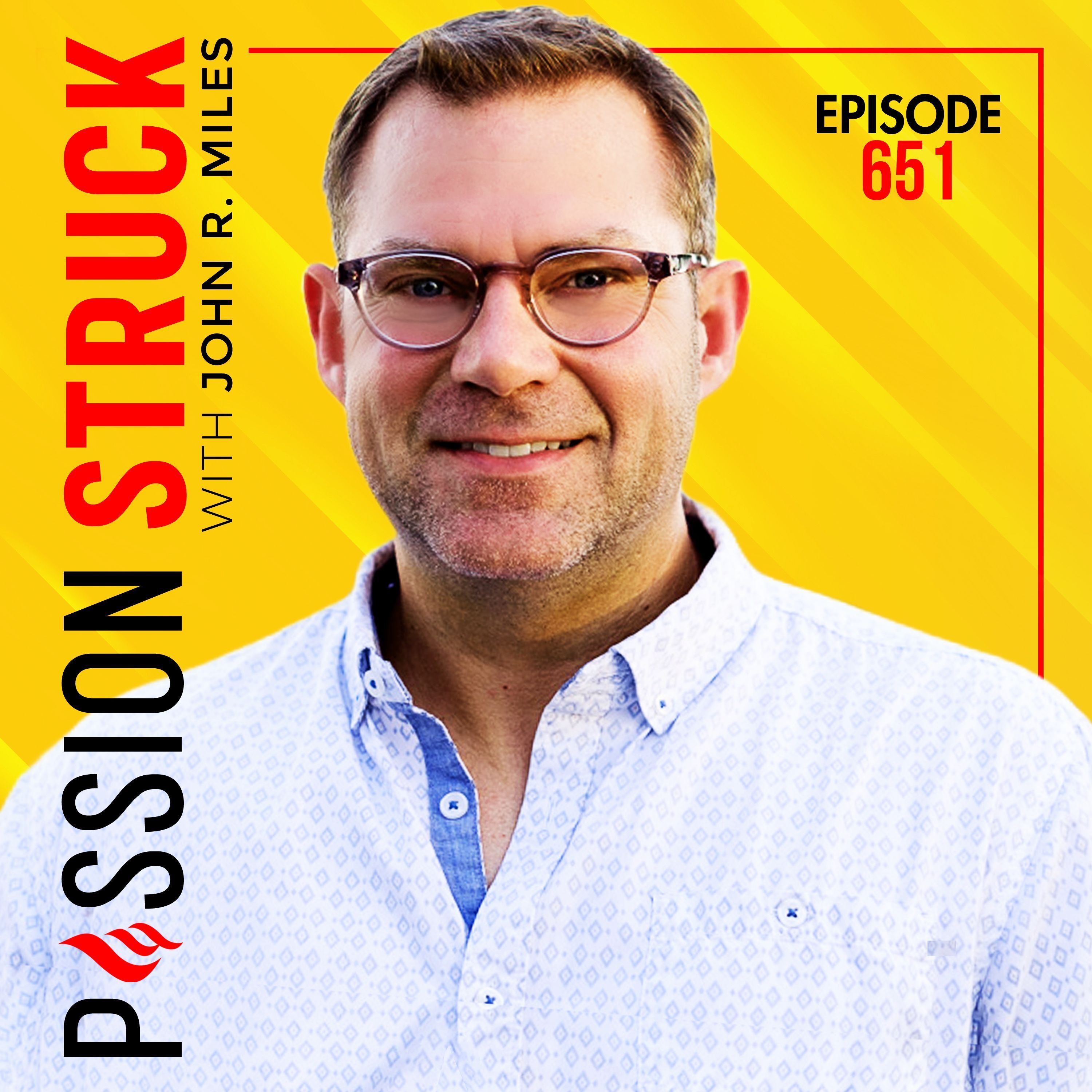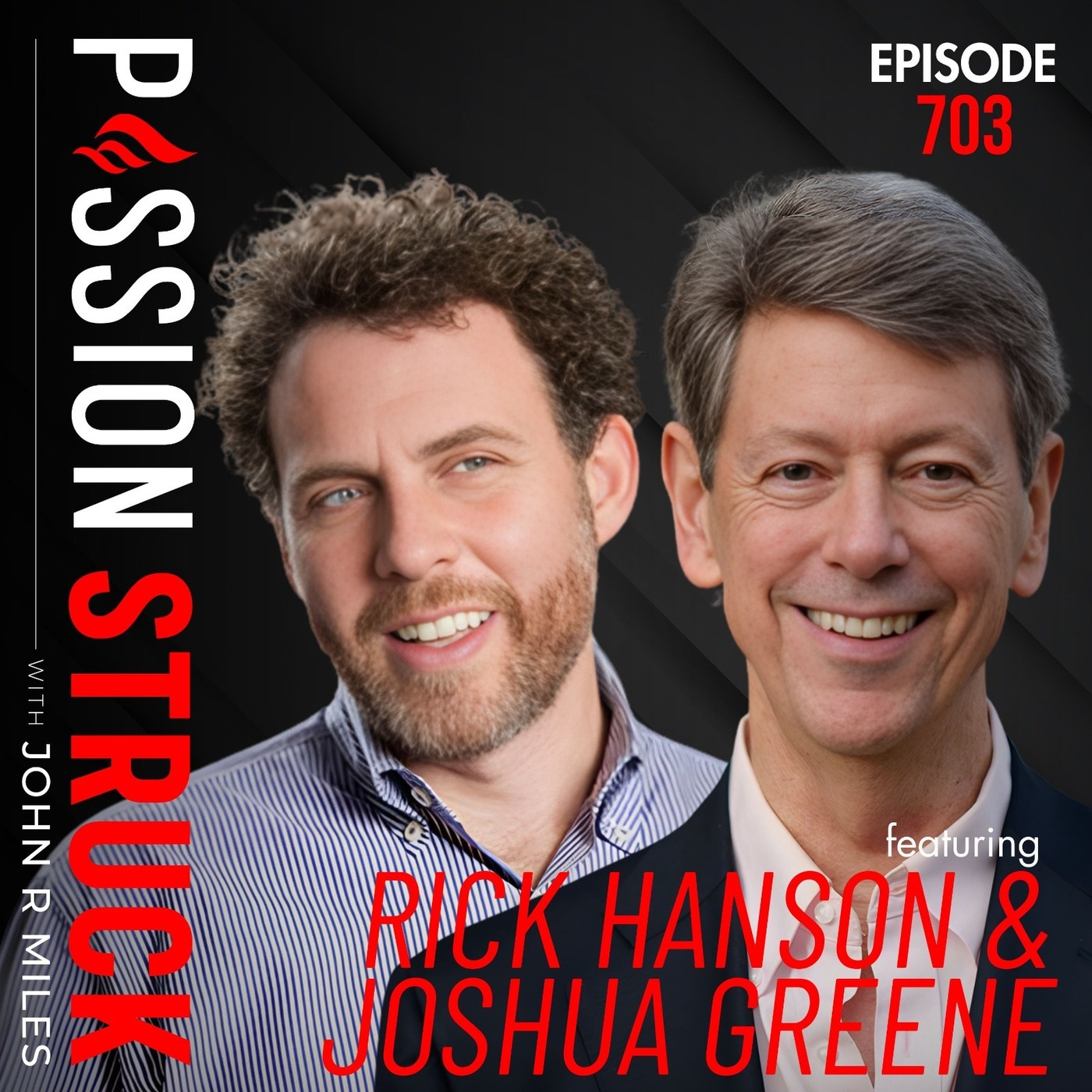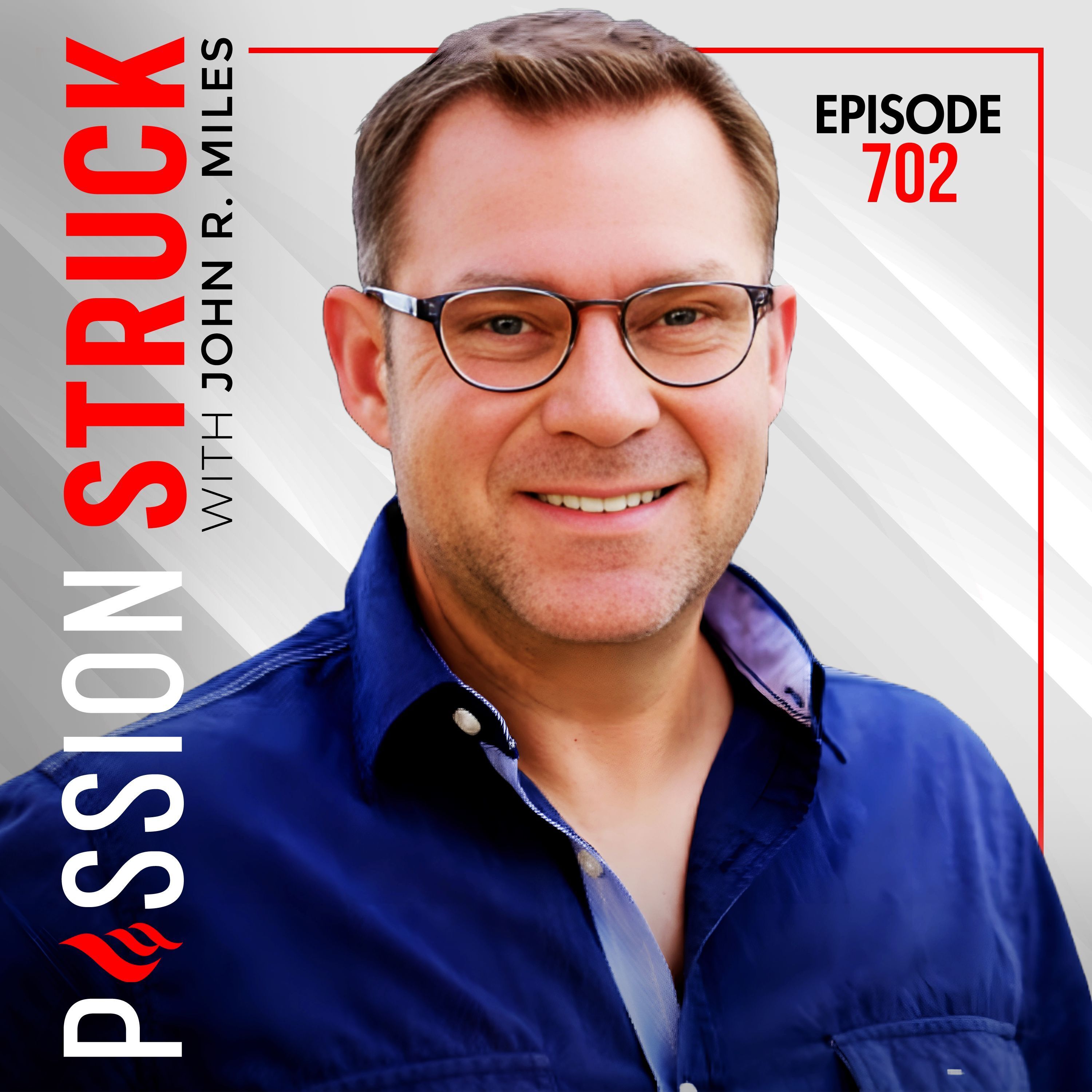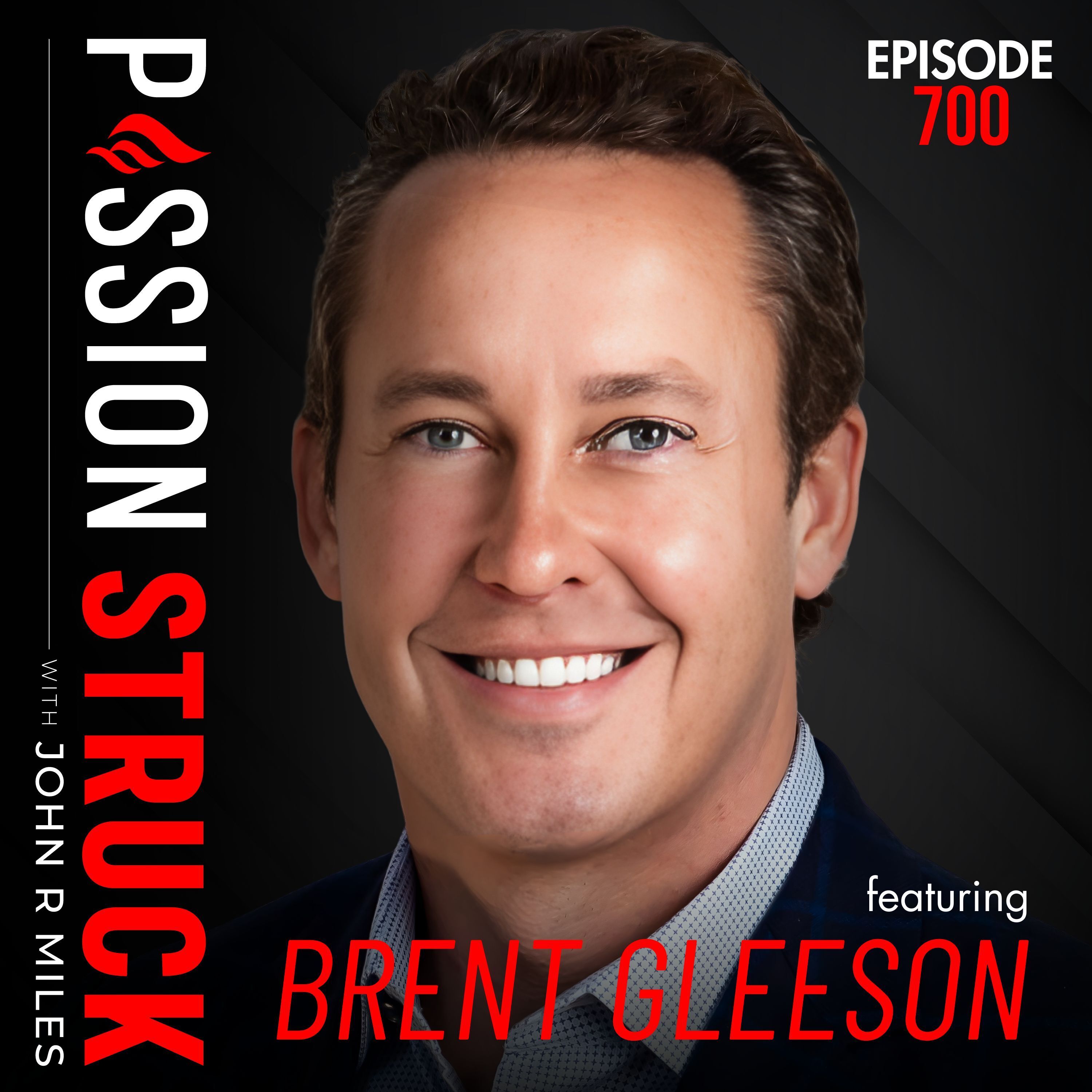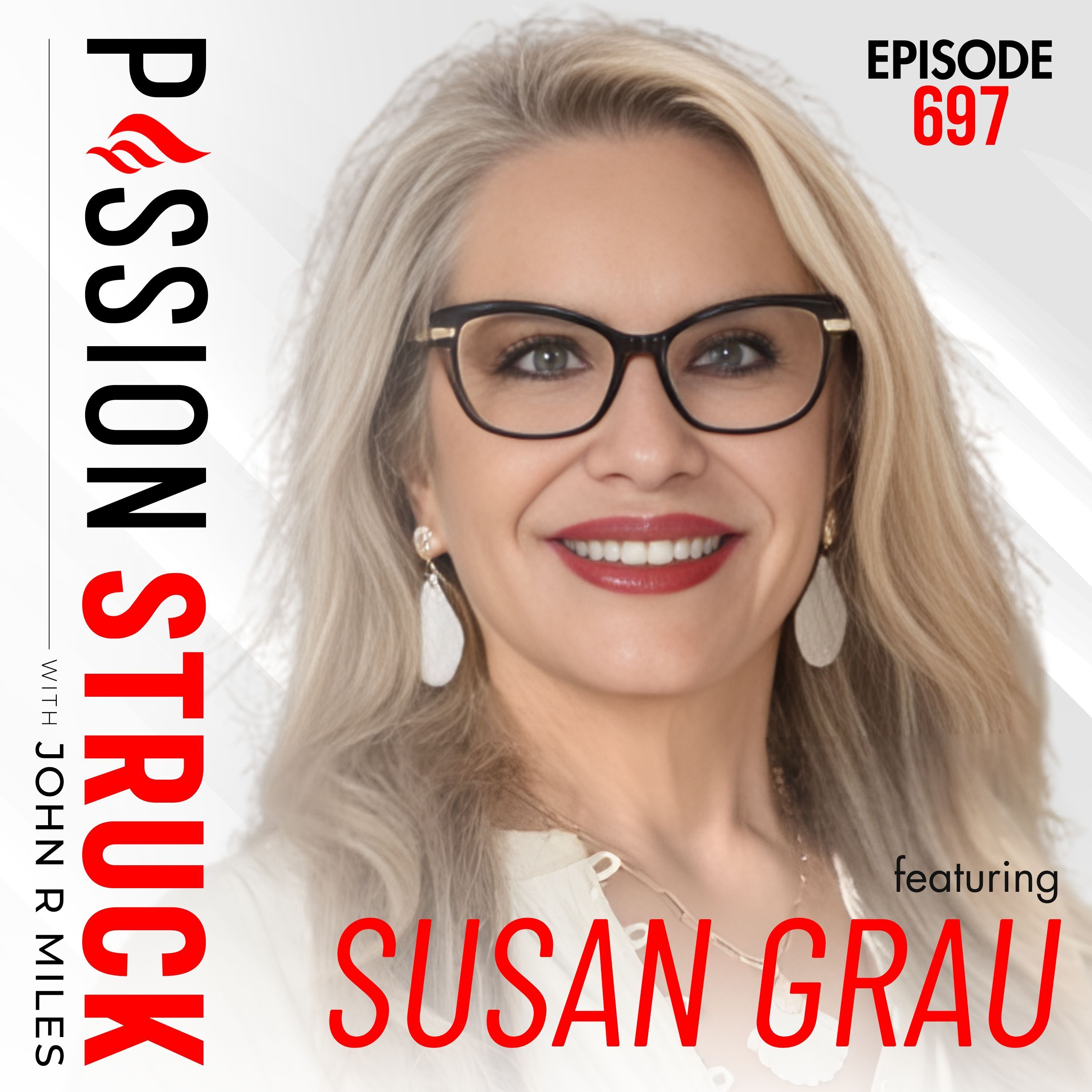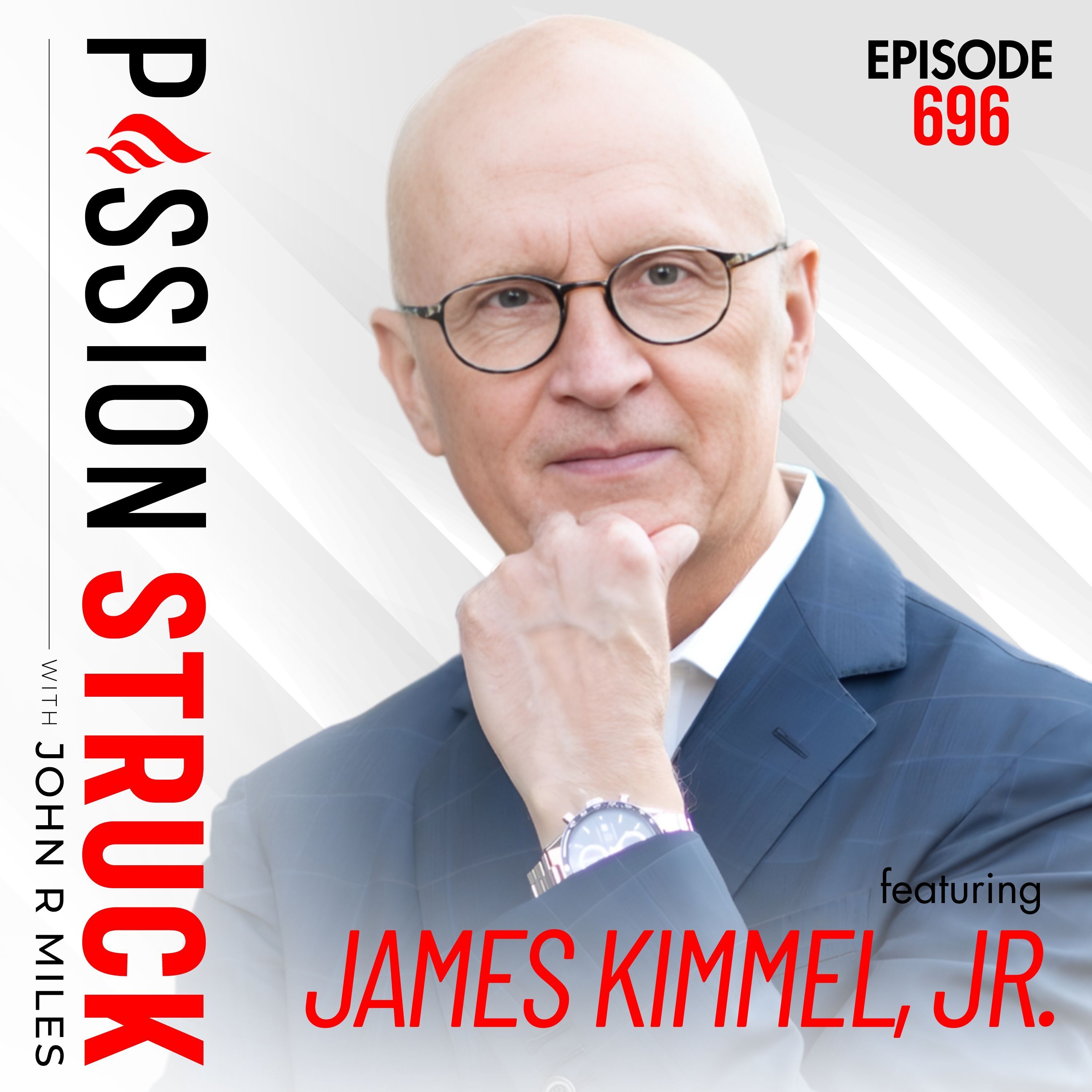Closing the Exposure Gap: Why Comfort Zones Become Cages w/John R. Miles | EP 651
In this pivotal episode of the Reclaiming Wellness series, John R. Miles tackles the hidden cost of safetyism — the cultural obsession with eliminating risk — and how it’s creating what he calls the “Exposure Gap.” Drawing on insights from Dr. Wolfgang Linden’s work on exposure therapy, Jonathan Haidt’s research on safetyism, and Dr. Kevin Tracey’s groundbreaking vagus nerve science, John explains why avoiding discomfort weakens our nervous system and resilience over time. You’ll learn why controlled exposure to manageable stress is crucial for developing emotional and physical resilience. With real-world examples, a practical four-step “Bridge Crossing Plan,” and actionable strategies, this episode will show you how to unlock courage, reclaim adaptability, and close your own exposure gap.
Visit the Link for the Full Show Notes.
Drawing on personal stories, expert interviews, and real-world insights, John explores the science behind blocked absorption—and invites listeners to realign with what their body and mind truly need.
Go Deeper: The Ignited Life Substack
If this episode stirred something in you, The Ignited Life is where the transformation continues. Each week, I share behind-the-scenes insights, science-backed tools, and personal reflections to help you turn intention into action.
Get the full companion workbook at TheIgnitedLife.net
Full episode on YouTube: https://www.youtube.com/@JohnRMiles
Listen on Apple Podcasts, Spotify, or wherever you get your podcasts
Everyone deserves to feel valued and important. Show it by wearing it: https://theignitedlife.myshopify.com/
See Privacy Policy at https://art19.com/privacy and California Privacy Notice at https://art19.com/privacy#do-not-sell-my-info.
Press play and read along
Transcript
Speaker 1 Why choose a sleep number smart bed?
Speaker 2 Can I make my site softer?
Speaker 1 Can I make my site firmer? Can we sleep cooler? Sleep number does that, cools up to eight times faster, and lets you choose your ideal comfort on either side. Your sleep number setting.
Speaker 1 Enjoy personalized comfort for better sleep night after night. It's our Black Friday sale, recharged this season with a bundle of cozy, soothing comfort.
Speaker 1
Now only $17.99 for our C2 mattress and base plus free premium delivery. Price is higher in Alaska and Hawaii.
Check it out at a sleep number store or sleepnumber.com today.
Speaker 3
Adobe Acrobat Studio, so brand new. Show me all the things PDFs can do.
Do your work with ease and speed. PDF spaces is all you need.
Do hours of research in an instant.
Speaker 3
With key insights from an AI assistant. Pick a template with a click.
Now your prezzo looks super slick. Close that deal.
Yeah, you won. Do that, doing that, did that, done.
Speaker 3
Now you can do that, do that with Acrobat. Now you can do that, do that.
With the all-new Acrobat. It's time to do your best work with the all-new Adobe Acrobat Studio.
Speaker 5 Coming up next on Passion Struck, imagine a world where children never fall off a bike, never walk alone to the store, never climb a tree higher than their parents' outstretched arms. It sounds safe.
Speaker 5
It sounds caring, but hidden inside that safety is a trade-off. One that decades of psychology tells us.
can quietly reshape the way we handle stress, challenge, and uncertainty.
Speaker 5 And here's the thing, it's not just kids.
Speaker 5 The same trade-off is following us into adulthood, into our relationships, our careers, and even our health, making us more fragile in ways we rarely notice until life turns up the heat.
Speaker 5 If you've ever wondered why stress seems to hit harder or why even small setbacks can feel like a crisis, There's a reason. And today we're going to uncover it.
Speaker 5
And more importantly, how you can train your mind and body to get that resilience back. Welcome to Passion Struck.
Hi, I'm your host, John R. Miles.
Speaker 5 And on the show, we decipher the secrets, tips, and guidance of the world's most inspiring people and turn their wisdom into practical advice for you and those around you.
Speaker 5 Our mission is to help you unlock the power of intentionality so that you can become the best version of yourself. If you're new to the show, I offer advice and answer listener questions on Fridays.
Speaker 5 We have long form interviews the rest of the week with guests ranging from astronauts to authors, CEOs, creators, innovators, scientists, military leaders, visionaries, and athletes.
Speaker 5
Now, let's go out there and become Passion Struck. Hi, friends.
Welcome to episode 651 of Passion Struck. I'm your host, John Miles.
Speaker 5 And before we jump in, I want to share something that stopped me in my tracks this week.
Speaker 5 I just learned that Passion Struck the book has won the Stevie Gold Medal at the International Business Awards for Best Business Book.
Speaker 5 And Passion Struck the Podcast also won Stevie Gold for Best Independent Podcast. A few months ago, both the book and the podcast received the same gold honors at the American Business Awards.
Speaker 5 To have this happen again on a global stage is surreal. These awards aren't just milestones for me personally.
Speaker 5 They're a reflection of a mission that began as a simple spark to help people live more intentionally, to live like they matter, and to create the kind of change that transforms lives.
Speaker 5 And above all, this recognition belongs to you, the incredible Passion Stark community.
Speaker 5 I can't thank you enough for being part of that journey, whether you've read the book, tuned into the podcast, passed it on to a friend, or simply taken one idea and woven it into your life.
Speaker 5 You are the reason this platform exists. And that's exactly what today's episode is about.
Speaker 5 Pushing past fear, embracing the small acts of courage that build resilience, and stepping boldly into the moments that matter most. And this leads me to an interesting question.
Speaker 5 When you were a kid, how far from home were you allowed to roam? A few blocks? Across town? Today, most kids' range is a fraction of what it once was. Sometimes no farther than the front yard.
Speaker 5 And it's not just physical boundaries that have shrunk. Emotional boundaries have too.
Speaker 5 We are living in a time where the smallest discomfort, an offhand comment, a challenging idea, can be treated as something dangerous.
Speaker 5 We've created a culture where safety is king, and yet, somehow, anxiety and depression are at record highs. It's a paradox.
Speaker 5 The more we protect ourselves from discomfort, the less prepared we are to handle it. Jonathan Haidt calls this shift safetyism.
Speaker 5 The belief that we're fragile and must be shielded from anything that could upset or harm us. But in protecting ourselves from discomfort, we may be creating the very fragility we fear.
Speaker 5 In this Reclaiming Wellness series, we've been unpacking why so many of us are doing the right things for our health and still not feeling any better.
Speaker 5 In week one, I explored the wellness gap, the space between our intentions and our outcomes.
Speaker 5 Last week, In the Fuel Pillar, we dug into the absorption gap, why even perfect nutrition, sleep, and recovery don't fully land if your system isn't ready to receive them.
Speaker 5 This week, we're moving into the feel pillar, how we regulate emotions and heal the nervous system. And here's where I want to challenge you.
Speaker 5 There's a hidden gap many of us have unknowingly fallen into. One that quietly erodes our resilience, limits our growth, and even impacts our physical health.
Speaker 5 If you've ever wondered why even small stressors can feel overwhelming, the answer often lies here.
Speaker 5 And today we'll uncover what it is, how it's been shaped by modern culture, and how you can start closing it. Not with theory, but with practice.
Speaker 5 I'll share insights from my recent conversation on Tuesday with Wolfgang Linden, one of the world's leading experts on exposure therapy, as well as Scott Simon, founder of Scare Your Soul.
Speaker 5 We'll also connect the dots to my episode yesterday with Dr. Kevin Tracy on the mind-body link.
Speaker 5 And as always, I'll give you an actionable takeaway plus a workbook on my sub stack, theignitedlife.net, to help you put it all into practice. If you're new to the show, we've made it easy to dive in.
Speaker 5 Check out our starter packs. Curated playlists like the psychology of change, the power of purpose, and the science of mattering.
Speaker 5
You can find them on Spotify or at passionstruck.com slash starter packs. They'll help you explore the topics that matter most to you.
Now, let's get into today's episode.
Speaker 5 Thank you for choosing Passionstruck and choosing me to be your host and guide on your journey to creating an intentional life. Now, let that journey begin.
Speaker 5 If you've followed me for any length of time, you know I'm constantly searching for the breakthroughs that actually make a difference in how we age, feel, and perform.
Speaker 5 Lately, I've been taking timeline MitoPure gummies, and I got to tell you, I'm feeling the shift. My energy is more sustained, my focus sharper, and my recovery quicker.
Speaker 5 It's like I upgraded my engine at the cellular level. What makes them stand out?
Speaker 5 They're powered by MitoPure, the only clinically proven form of urolithin A, a compound that activates your longevity pathways, supports muscle strength, and improves cellular energy.
Speaker 5
It's clean, vegan, and backed by over 15 years of cutting-edge science. Dr.
Mark Hyman calls urolithin A a game changer for longevity. And with Mitopure, everyone can benefit.
Speaker 5
no matter your gut health. If you want to stay strong and energize now and as you age, then you have to try Motto Pure Gummies.
My friends at Timeline are offering 20% off just for my listeners.
Speaker 5
Head to timeline.com slash passionstruck to get started. That's timeline.com slash passionstruck.
Yourselves will thank you.
Speaker 5
There was once a small village with a single wooden bridge. that crossed over a fast-moving stream.
For generations, children learned to cross it as soon as they could walk.
Speaker 5 First, holding a parent's hand, then wobbling across it alone, and eventually running with friends to the meadows beyond. The bridge was never dangerous, but it wasn't perfect either.
Speaker 5
Some boards were loose. The wind could whip at your clothes.
Every so often, a child would slip, scrape a knee, or come home muddy. One year, the village council decided that this was unacceptable.
Speaker 5
They built a high fence at each edge of the bridge and locked the gates. We're keeping our children safe, they said.
No more accidents, no more tears. And it worked at first.
Speaker 5 No scraped knees, no muddy shoes, no frightened parents. But slowly, something changed.
Speaker 5
Children began whispering that the water was dangerous, that the boards might give way, that no one could be sure. what lay beyond the other side.
Some stopped going near the stream altogether.
Speaker 5
Years later, when the gates were finally opened again, most of the young adults froze at the edge. The stream hadn't changed.
The boards were no weaker than before, but their legs shook.
Speaker 5 Their hearts raced, and in their minds, the bridge felt far more dangerous than it had ever been. Over time, the fear became part of folklore.
Speaker 5 Parents who had once crossed the bridge as children now warned their sons and daughters never to step foot on it.
Speaker 5 They spoke of the rushing water as if it was a living thing waiting to swallow the careless.
Speaker 5 Old men told stories of the planks that gave away, of travelers who vanished downstream, tales that no one could quite verify, but no one bothered to challenge.
Speaker 5
The stories worked their way into lullabies and bedtime warnings. What began as protection hardened into doctrine.
Slowly, the village's rhythm shifted. Children stopped wandering towards the stream.
Speaker 5
Families spent less time outdoors. The meadow on the far bank grew wild and unused.
Without the flow of people and ideas back and forth, the village's sense of possibility shrank.
Speaker 5 The bridge still stood, but in the minds of the people, it had already collapsed. And here's the thing: nothing about the bridge had changed.
Speaker 5
The danger wasn't in the structure itself, it was in the story they told about it. We do this too.
In our schools, workplaces, and communities, safety stories take root.
Speaker 5 We whisper warnings about certain risks, retell the rare mishaps, inflate them until they loom larger than the countless safe crossings. Over time, the legend becomes reality.
Speaker 5 Not because the danger is real.
Speaker 5
but because we've trained ourselves to see it that way. The bridge is risk.
The meadow is growth. And the fence?
Speaker 5 That's the cultural bubble wrap we've been wrapping ourselves and our kids in for decades.
Speaker 5 Now, I know this sounds like something straight out of a children's book, but I want you to picture it not as a fairy tale, but as a mirror, because we're living our own version of that village right now.
Speaker 5
What began as protection from danger, from harm, from discomfort, has quietly become something else. Protection from the very practice of being resilient.
Earlier this week, I spoke with Dr.
Speaker 5 Wolfgang Linden, one of the pioneers of exposure therapy, the gold standard for treating anxiety disorders. He told me something that landed like a stone in my chest.
Speaker 5
Avoidance doesn't just keep fear in place. It grows it.
When we sidestep discomfort, we're not just dodging momentary stress. We're training our nervous system to believe we can't handle it.
Speaker 5
Over months or years, that belief rewires our physiology. Our emotional thermostat narrows.
So even small fluctuations begin to feel like emergencies.
Speaker 5 Linden's decades of clinical work show the opposite is also true. When we deliberately, gradually face manageable risks, our brain and body learn that discomfort is survivable, even useful.
Speaker 5
That's not just a metaphor. It's a recalibration recalibration of the entire stress recovery system.
And that idea from Dr.
Speaker 5 Linden that avoidance grows fears connects perfectly to what social psychologist Jonathan Haidt has been warning us about for years.
Speaker 5 First, in the coddling of the American Mind, which he wrote with Greg Lukianoff, and more recently in his latest book, The Anxious Generation. He calls it safetyism.
Speaker 5 the belief that the highest virtue is to shield ourselves, and especially young people, from anything that might cause emotional or physical discomfort.
Speaker 5 The trouble is the things that build resilience, uncertainty, disagreement, risk of failure, all live on the other side of that shield.
Speaker 5 And when we eliminate them from daily life, we're like the young adults at the bridge, standing at the edge of challenges we once could handle, only now our legs shake.
Speaker 5
You can see this cultural split in action. In parts of Scandinavia, forest schools send children into the woods for much of the day.
In every season, in nearly every kind of weather, they build fires.
Speaker 5
They climb trees without harnesses. They use real knives for whittlesticks.
The risk is deliberate, not accidental. The belief is simple.
Speaker 5 Children grow capable by doing things that carry a margin of danger. Contrast that with the typical American schoolyard.
Speaker 5 Recess is shorter than it was a generation ago, often confined to padded play with structures with rounded edges and pre-approved games. Climbing trees or jungle gyms is banned.
Speaker 5
Ball games are regulated to the point of tedium. Even small scrapes trigger incident reports.
The message, whether spoken or not, is the same. You're safer if you avoid risk.
Speaker 5 Elite performance cultures understood the opposite. Military training, for instance, thrives on controlled discomfort.
Speaker 5 Special operations programs deliberately create high-stress environments, sleep deprivation, cold water immersions, simulate combat, not to punish, but to inoculate.
Speaker 5
They know that resilience can't be lectured into existence. It must be lived, stressed, and recovered from.
The same principle drove NASA into the Apollo era.
Speaker 5 The moon landing was an audacious leap precisely because the culture accepted, even embraced, the fact that risk was unavoidable.
Speaker 5 Engineers ran thousands of simulations that failed spectacularly, not to eliminate every uncertainty, but to train for the moment when the unexpected would strike.
Speaker 5 Today, in many organizations, the pendulum has swung so far toward eliminating any possible hazard that bold experimentation is smothered under layers of just-to-be-safe protocols.
Speaker 5
Height's warning comes into sharper focus here. When cultures protect every discomfort, they're not just preventing them.
They're trading short-term safety for long-term fragility.
Speaker 5 And when the real test comes, whether it's a crisis, a setback, or a once-in-a-lifetime opportunity, people find themselves at the edge of the bridge, legs shaking.
Speaker 5
Now, I know what you may be thinking, okay, John. but I'm not sending my kids to some forest schools in Norway, and I'm not joining the Navy SEALs.
So what does this mean for me?
Speaker 5
So far, we've explored the science and the culture that's quietly training us to avoid risk and why that's making us less resilient, not more. But here's the good news.
There's a way back.
Speaker 5 I'll tell you how, right after the short break from our sponsors.
Speaker 6 This episode is brought to you by Progressive Insurance. Do you ever find yourself playing the budgeting game?
Speaker 6 Well, with a name your price tool from Progressive, you can find options that fit your budget and potentially lower your bills. Try it at progressive.com.
Speaker 6 Progressive Casualty Insurance Company and Affiliates. Price and coverage match limited by state law, not available in all states.
Speaker 1 My place in tech changes every day, but I don't fear the future because I'm with the leader, Plural Sight.
Speaker 1 Their online learning platform has the hands-on, expert-led courses I need to master new tech skills and create bigger impacts. So I can learn quickly and stay ahead.
Speaker 1
With Pluralsight, I don't fear what's next. I embrace it.
Tap in at pluralsight.com and see for yourself.
Speaker 5 All right, we're back. As I said, building resilience doesn't have to be extreme.
Speaker 5
In fact, my friend Scott Simon, founder of Scare Your Soul, will tell you it starts with something he calls microbravery. He believes courage is a muscle.
and muscles grow when you use them.
Speaker 5 The key isn't a single dramatic leap, but thousands of tiny ones. Speaking up in a meeting, striking up a conversation with a stranger, taking a cold plunge even when your body resists.
Speaker 5 The moments that make life vivid, he told me, are rarely the moments you feel safe. They're the moments you've leaned in, even when it scared you.
Speaker 5
Each of those moments is a rep for your nervous system, proof. that you can step into discomfort and come out intact.
Over time, those reps rebuild what safetyism erodes.
Speaker 5 And this is where we need to zoom out for a moment, because in our Reclaiming Wellness series, we've uncovered a few hidden gaps already. And today, we're adding another one to the list.
Speaker 5 I've talked about the wellness gap and the absorption gap, but there's another hidden obstacle, the exposure gap.
Speaker 5 The distance between the challenges life will inevitably throw at you and the challenges you've prepared for.
Speaker 5 If our days are engineered to be frictionless, our systems lose the ability to recover from stress. And when real adversity comes, it feels heavier, bigger, and more dangerous than it actually is.
Speaker 5
Just like the bridge did with those young villagers. The good news is resilience isn't lost forever.
The gates can be unlocked. You don't need to run across the bridge on day one.
Speaker 5 You just need to learn how to start walking again. One step, one small risk, one act of micro bravery at a time.
Speaker 5 Because on the other side of that bridge, in the meadow, is the life you're actually built for. And most people think that resilience is built in big moments.
Speaker 5
The job loss, the diagnosis, the heartbreak. And it's true, those events can forge something powerful in us.
but only if we've been training for them in smaller ways all along.
Speaker 5 Without that training, even moderate changes can feel like avalanches. It's why some people can manage a million-dollar project at work, but spiral when their flights get delayed.
Speaker 5
Or why a teenager can ace every AP exam, yet crumble under the weight of minor social conflict. This isn't weakness.
It's wiring.
Speaker 5
Our nervous system calibrates itself based on repeated exposure to stress. Just enough to challenge us, but not so much to overwhelm us.
When life offers too little of that, we don't get the practice.
Speaker 5 And without practice, regulation becomes rusty. Psychologist Donald Meichenbaum coined a phrase for this in the 1980s, stress inoculation training.
Speaker 5 Like a vaccine, the idea is to introduce manageable doses of stress in a controlled way, so the mind and body learn to respond without panic. Modern neuroscience backs this up.
Speaker 5 Repeated tolerable stress exposure strengthens the prefrontal cortex, the part of the brain that regulates emotions and makes decisions, while calming overreactive threat responses from the amygdala.
Speaker 5 It's why firefighters train in simulated burning buildings, why astronauts practice emergency drills in a neutral buoyancy lab, and why exposure therapy works for phobias.
Speaker 5
The brain learns, I can handle this. And here's where Dr.
Kevin Tracy's research kicks in. Dr.
Speaker 5 Tracy, a neurosurgeon and pioneering researcher researcher on the vagus nerve, has shown that this nerve acts like a master control switch for your body's stress and recovery systems.
Speaker 5 When you face a challenge, even a small one, your fight or flight response spikes. But if you stay with it long enough for your vagus nerve to kick in, your body learns how to come back down faster.
Speaker 5 It's like teaching your internal thermostat not to overheat under pressure. The more you practice a cycle, stress, then recovery, the better your nervous system gets at regulating itself.
Speaker 5 Over time, you're not just mentally tougher, your body is physically more resilient to life shocks. And that's why the best way to close your own exposure gap isn't a grand gesture.
Speaker 5
It's repeated practice in low stakes moments. The problem is most of us don't live in astronaut training facilities.
We live in homes and offices that are designed for maximum comfort and convenience.
Speaker 5 If we're not careful, our daily lives become frictionless, and that's the breeding ground for the exposure gap. So the antidote isn't dramatic, high-stakes risk.
Speaker 5 It's what Scott Simon calls microbravery. If you usually avoid public speaking, then volunteer to resent at the next team meeting or consider joining Toastmasters.
Speaker 5 If you tend to keep to yourself while you're at the gym, Strike up a two-minute conversation with the person next to you.
Speaker 5 If you hate the cold, try a 30-second cold shower at the end of your morning routine.
Speaker 5
Each act is small, almost forgettable, but together they form a drip of evidence to your nervous system that discomfort is not a danger. It's a doorway.
So let's make this really practical.
Speaker 5 I'm all for stories and science, but if we don't walk away, with something that we can actually use on Monday morning, what's the point?
Speaker 5
Here's a simple four-step method to start closing your own exposure gap, one act of courage at a time. The first step is to spot your avoidance.
Begin with a discomfort audit.
Speaker 5 For one week, pay attention to the moments you quietly sidestep, the email you delay sending, the conversation you avoid starting, the new activity you tell yourself you're too busy to try.
Speaker 5
Write them down. No judgment, just observation.
This way, you're mapping your bridges. The second step is to pick a tolerable risk.
Dr.
Speaker 5 Wolfgang Linden's research on exposure therapy shows that the magic happens at the edge of comfort, not so far past it that you panic, but far enough to stir your nerves.
Speaker 5 Rate each avoided moment on a scale of 1 to 10, where 1 is barely noticeable and 10 is full-blown panic. Start with something in the three to four range.
Speaker 5 Enough to feel it in your chest, but not enough to keep you up at night. And this leads us to the third step, practice exposure reps.
Speaker 5 Just like Scott Simon's microbravery reps, repetition matters more than intensity. Cross the same bridge again and again until your nervous system recalibrates and the number drops.
Speaker 5 For example, as speaking in meetings feels to you like a four on a scale of 10, commit to doing it once a day for a week.
Speaker 5 By the end, you'll notice your pulse slowing, your voice steadying, because your body has learned, I can handle this.
Speaker 5 In our conversation, Lyndon puts it simply, short-term discomfort is the price of long-term capacity. And this leads us to the fourth step, level up.
Speaker 5
Once a bridge feels solid under your feet, look for the next one. A four becomes a five.
A five becomes a six. Your tolerance expands, and with it, so does your life.
This works in any domain.
Speaker 5
At work, present to a larger group. Pitch a bolder idea.
Negotiate instead of accepting the first offer. In your relationships, share more of what you feel.
Initiate the difficult conversation.
Speaker 5
Ask the vulnerable question. And in your health routine, add one more minute to your cold plunge.
Take the steeper hiking trail. Try the fitness class you've been avoiding.
Speaker 5 A listener told me she recently tried this for 30 days. Her first bridge was asking a colleague for help, something she'd always avoided for fear of looking incompetent.
Speaker 5 By week three, she was not only asking for help, but also volunteering to lead a project she'd once considered above her pay grade.
Speaker 5 Her takeaway was, it wasn't that the work got easier, it just got stronger. When you see courage as a muscle, every rep counts.
Speaker 5 Every bridge you cross widens your meta, and eventually the place that once made your legs shake becomes your new normal. The parable of the bridge isn't really about wood and water.
Speaker 5 It's about what happens when we stop crossing, when protection morphs into avoidance. Resilience isn't forged in one dramatic leap across a raging river.
Speaker 5 It's built in countless wobbly crossings you've made before. The ones where you've scraped your knees, muddled your shoes, and strengthened your stride.
Speaker 5
But too often we let myths keep the gates locked. Myths like avoiding stress makes us healthier.
The truth is moderate stress paired with recovery is how your body and mind get stronger.
Speaker 5
Avoiding all stress is like avoiding the gym and expecting to get fit. Then there's the myth, resilience is something you're born with.
The truth is, resilience is a trait. It's a skill.
Speaker 5
Every challenge you face is a rep. The more reps you take, the more capacity you build.
And then there's this last myth that I love. Kids will figure it out later.
Speaker 5 The truth is resilience is easier to wire early. Without those small formative challenges, adaptability becomes harder to build in adulthood.
Speaker 5
The stories we tell ourselves about stress shape whether we grow from it or shrink from it. Most of these myths are just that, stories.
And like the villagers at that bridge, they can be rewritten.
Speaker 5 So that's the exposure gap, the distance between the challenges life will inevitably throw at you and the ones that you've trained for. And remember, you don't have to sprint across the bridge.
Speaker 5 Just take a step, one act act of microbravery at a time. If you want to go deeper, I've created a free workbook for this episode to help you map your own bridge crossing plan.
Speaker 5 You'll find it linked in the Substack post for today's episode at theignitedlife.net. And by the way, if you prefer watching, you can catch all our episodes on YouTube.
Speaker 5 Seeing these conversations come alive visually adds a whole new layer.
Speaker 5 If you're part of an organization, school, or event that's ready to close its own exposure gap, visit johnrmiles.com slash speaking to learn how we can work together to create intentional change and ignite growth.
Speaker 5 Next week, I'm sitting down with Christopher Wong Mickelson and Jennifer Toste Karras to talk about what they call a meaningful career, how to align your work and purpose and avoid the traps of burnout and disconnection.
Speaker 5 You're not going to wanna miss it.
Speaker 4 When we feel our work is deeply meaningful, we are less sensitive to maximizing our rewards that we get from it.
Speaker 4 For example, if I'm paid, if I'm doing a task that's deeply meaningful and I know that I have, I'm being paid on a per-task basis, like a piece rate kind of compensation scheme, I will do more work.
Speaker 4
the more meaningful my work. I'm not totally insensitive to money.
I'm not totally clueless about money. If it stands to be more money made, I'll expend more effort.
Speaker 4 The interesting thing that we were able to disentangle in our study, though, is the same relationship held when workers were salaried, meaning I can do more work, but I'm not necessarily additionally compensated for it.
Speaker 5 Because the bridge is still there, the meadow is still waiting, and the story you tell yourself about risk will decide whether you ever set foot on the other side.
Speaker 5
So this week, do one micro act of bravery. Take one step towards resilience.
And as always, live life passion-struck.
Speaker 1 Your global campaign just launched.
Speaker 4 But wait, the logo's cropped.
Speaker 7 The colors are off. And did Legal clear that image?
Speaker 2 When teams create without guardrails, mistakes slip through. But not with Adobe Express, the quick and easy app to create on-brand content.
Speaker 2 Brand kits and lock templates make following design guidelines a no-brainer for HR sales and marketing teams.
Speaker 2 And commercially safe AI, powered by Firefly, lets them create confidently so your brand always shows up polished, protected, and consistent everywhere. Learn more at adobe.com slash go slash express.
Speaker 7 With markets changing and living costs rising, finding a reliable place to grow your money matters now more than ever.
Speaker 7 With the Wealthfront Cash Account, your uninvested money earns a 3.5% APY, which is higher than the average savings rate. There are no account fees or minimums.
Speaker 7 And you also get free instant withdrawals to eligible accounts 24-7. So you always have access to your money when you need it.
Speaker 7 And when you're ready to invest, you can transfer your cash to one of WealthFront's expert built portfolios in just minutes.
Speaker 7 More than 1 million people already use WealthFront to save and build long-term wealth with confidence. Get started today at WealthFront.com.
Speaker 7 Cash account offered by Wealthfront Brokerage LLC, member FINRA SIPC. Wealthfront Brokerage is not a bank.
Speaker 7 Annual percentage yield on deposits as of November 7th, 2025 is representative, subject to change, and requires no minimum. The cash account is not a bank account.
Speaker 7 Funds are swept to program banks where they earn the variable APY.
